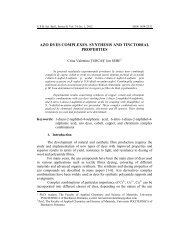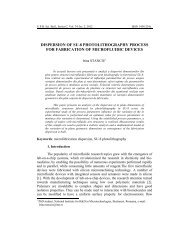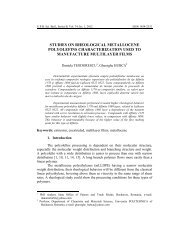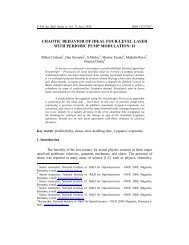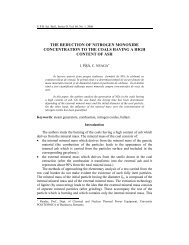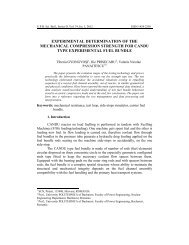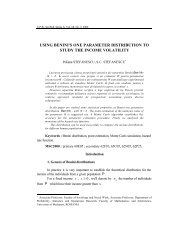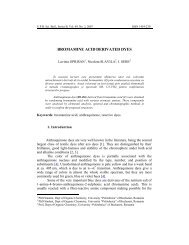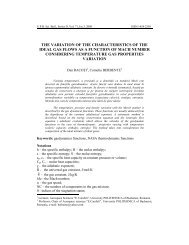a smart grid application â street lighting ... - Scientific Bulletin
a smart grid application â street lighting ... - Scientific Bulletin
a smart grid application â street lighting ... - Scientific Bulletin
You also want an ePaper? Increase the reach of your titles
YUMPU automatically turns print PDFs into web optimized ePapers that Google loves.
322 Dan Simhas, Claudiu Popovici<br />
The analyzed dataset shows that the difference between measured and<br />
estimated values (expected values) is below the active power of a lamp, when all<br />
luminaires are operational. When a lamp is burned, the result of the estimate<br />
points this out, through the maximum value of the calculated differences.<br />
3.3.Energy Savings<br />
From empirical data, collected from one of the metering points of the<br />
analyzed system, phase power (P f ) variation, with supply phase voltage (U f [V]),<br />
follows the following trend-line:<br />
P 0.0932⋅U<br />
−13.6<br />
[kW] (23)<br />
f<br />
=<br />
f<br />
In normal operation, for the studied supply point, voltage varied from<br />
229.8 V to 239.7 V and the corresponding active power consumptions from 7.83<br />
kW to 8.76 kW.<br />
Commonly used 250 W SON lamps can stay lit, for an input voltage down<br />
to 172 V [18]. Considering that the supply voltage of the lamps will be reduced to<br />
190 V, using (23) the power absorbed be the lamps is reduced to 4.11 kW.<br />
This translates into energy saving of around 50 %. However, is has to be<br />
considered that reducing normal illumination level can be applied in general,<br />
between 11 p.m. and 5 a.m., that is, outside the busy hours. The actual power<br />
savings are thus reduced to around 25 – 30 %. This percentage is confirmed by<br />
various vendors of voltage stabilization and mitigation equipment (e.g. Schneider<br />
Electric [19], General Electric, Romlux Lighting etc.).<br />
Reducing supply voltage will result in an illumination level dimmed<br />
accordingly. It must be considered individually, for each set of circumstances,<br />
whether the resulted <strong>lighting</strong> is sufficient.<br />
From an economic perspective, is has to be taken into account the fact that<br />
the interval 11 p.m. to 5 a.m. is entirely covered by the low tariff rate, for a nightday<br />
tariff. Thus, although energy savings may be significant, economic indicators,<br />
like return of investment, internal rate of return etc., have to be considered<br />
carefully. On the other hand, a complete economic analysis will take into account<br />
the increase of lamps life span, due to stabilized and reduced voltage usage [12].<br />
6. Conclusions<br />
Using the infrastructure needed for metering – meters, communication<br />
paths, servers and metering software – much more functionality can be obtained<br />
by adding relatively inexpensive hardware and creating adequate software.



